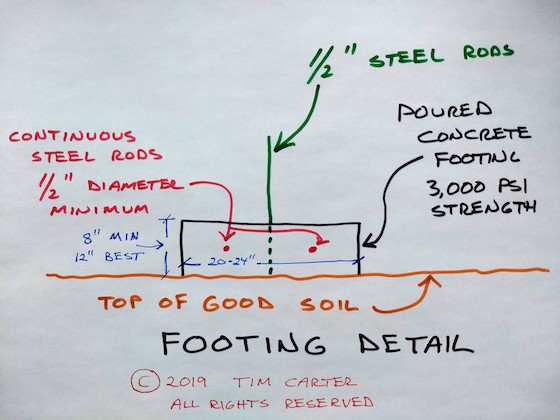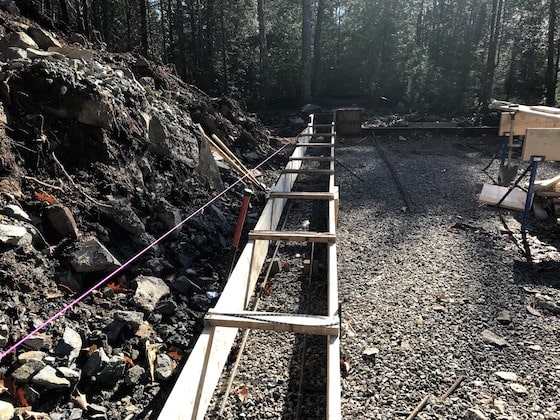Footing Detail

Footing detail | This footing has just been poured in the pouring rain. Note the vertical steel rods that will help connect the footing to the poured foundation. Copyright 2019 Tim Carter
Footing Detail - Concrete + Steel + Great Soil
A footing is quite possibly the most important detail in construction. A footing is what contacts the earth or soil and it distributes the total load, or weight of the building, so it doesn't sink into the ground.
What are the Details of a Footing?
A typical footing detail consists of:
- poured concrete a minimum of 8 inches thick - and often up to 12 inches thick
- continuous reinforcing steel rods - a minimum of 1/2-inch in diameter
- drainage sleeves to allow ground water to pass under the structure on its way to the ocean or sea


The footing forms are set and it's ready to pour the concrete. Note the continuous steel bars and how they are raised up above the soil. Copyright 2019 Tim Carter
How Important is Good Soil?
Good soil is very important. Never pour a footing on:
- compressible top soil
- smelly clay soil that contains organic rotting debris
- uncompacted fill dirt
Bad, or poor, soil will sink and the result is a structural failure of the house or the structure. If you're in doubt about the quality of the soil, hire an independent inspector. Most cities and towns require the building inspector to visit the job site before the concrete is poured to ensure the soil is strong.

Here's a foundation footing that's making a transition from one level to another. It's poured continuously for extra strength. Photo Credit: Tim Carter
How Strong Should the Concrete Be?
The poured concrete should have a PSI (pounds per square inch) compressive strength of at least 3,000 PSI. A builder may say that 2,500 PSI is fine, but pay the extra money for the 3,000 PSI mix.
My Footing Width and Depth column has addition information regarding footers.

